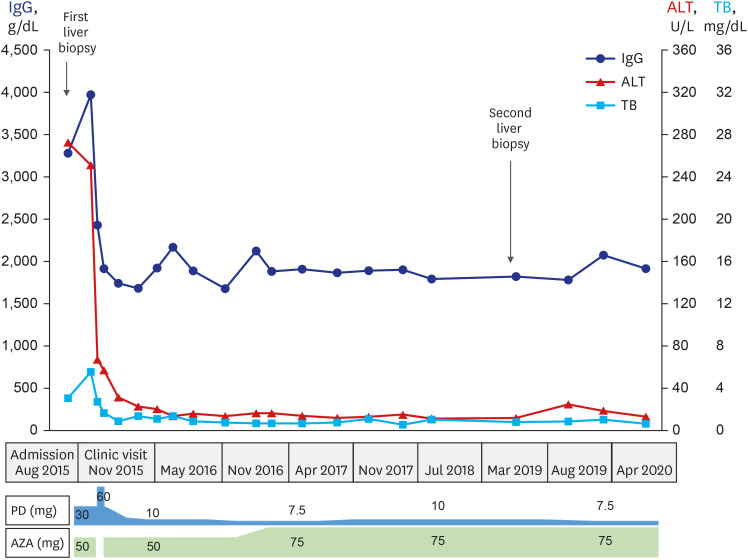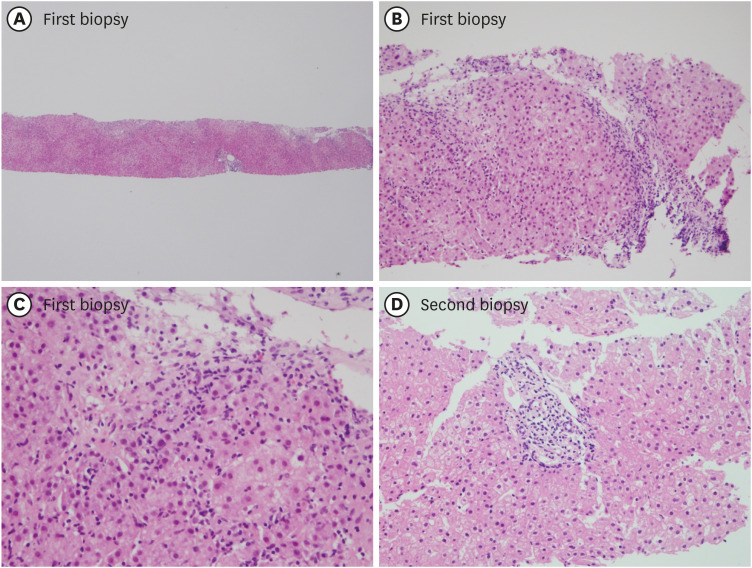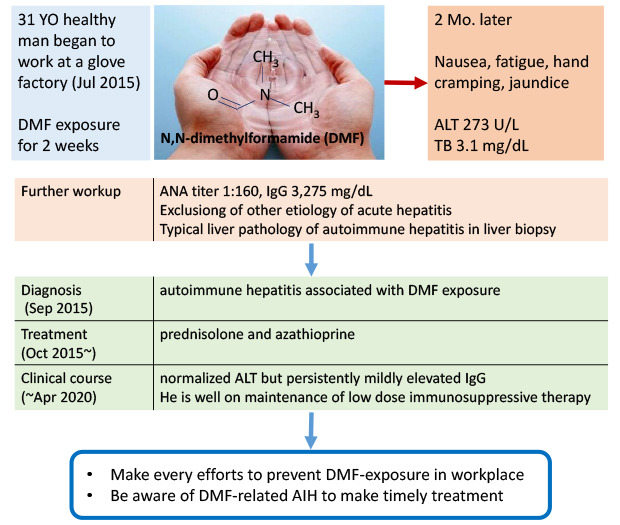1. Li MJ, Zeng T. The deleterious effects of N,N-dimethylformamide on liver: a mini-review. Chem Biol Interact. 2019; 298:129–136. PMID:
30576622.

2. International Agency for Research on Cancer. N,N-dimethylformamide. IARC Monographs on the Evaluation of Carcinogenic Risks to Humans, No. 115. Some Industrial Chemicals. Lyon, France: International Agency for Research on Cancer;2018. p. 119–170.
4. Rui D, Daojun C, Yongjian Y. Liver and heart toxicity due to 90-day oral exposure of ICR mice to N,N-dimethylformamide. Environ Toxicol Pharmacol. 2011; 31(3):357–363. PMID:
21787705.

5. Kelich SL, Mercieca MD, Pohland RC. Developmental toxicity of N-methylformamide administered by gavage to CD rats and New Zealand white rabbits. Fundam Appl Toxicol. 1995; 27(2):239–246. PMID:
8529819.

6. Hansen E, Meyer O. Embryotoxicity and teratogenicity study in rats dosed epicutaneously with dimethylformamide (DMF). J Appl Toxicol. 1990; 10(5):333–338. PMID:
2254584.

7. Massmann W. Toxicological investigations on dimethylformamide. Br J Ind Med. 1956; 13(1):51–54. PMID:
13293318.

8. Jeong SH. Current epidemiology and clinical characteristics of autoimmune liver diseases in South Korea. Clin Mol Hepatol. 2018; 24(1):10–19. PMID:
29307132.

9. Kil JS, Lee JH, Han AR, Kang JY, Won HJ, Jung HY, et al. Long-term treatment outcomes for autoimmune hepatitis in Korea. J Korean Med Sci. 2010; 25(1):54–60. PMID:
20052348.

10. Mieli-Vergani G, Vergani D, Czaja AJ, Manns MP, Krawitt EL, Vierling JM, et al. Autoimmune hepatitis. Nat Rev Dis Primers. 2018; 4(1):18017. PMID:
29644994.

11. Yeong TT, Lim KH, Goubet S, Parnell N, Verma S. Natural history and outcomes in drug-induced autoimmune hepatitis. Hepatol Res. 2016; 46(3):E79–88. PMID:
25943838.

12. Chieli E, Saviozzi M, Menicagli S, Branca T, Gervasi PG. Hepatotoxicity and P-4502E1-dependent metabolic oxidation of N,N-dimethylformamide in rats and mice. Arch Toxicol. 1995; 69(3):165–170. PMID:
7717872.

13. Koh SB, Cha BS, Park JK, Chang SH, Chang SJ. The metabolism and liver toxicity of N,N-dimethylformamide in the isolated perfused rat liver. Yonsei Med J. 2002; 43(4):491–499. PMID:
12205738.

14. Gong W, Liu X, Zhu B. Dimethylacetamide-induced occupational toxic hepatitis with a short term recurrence: a rare case report. J Thorac Dis. 2016; 8(6):E408–11. PMID:
27293868.

15. Hamada M, Abe M, Tokumoto Y, Miyake T, Murakami H, Hiasa Y, et al. Occupational liver injury due to N,N-dimethylformamide in the synthetics industry. Intern Med. 2009; 48(18):1647–1650. PMID:
19755767.

16. Zhang XT, Kuang XY, Feng YM. Clinical report of occupational acute dimethylformamide poisoning. Zhonghua Lao Dong Wei Sheng Zhi Ye Bing Za Zhi. 2011; 29(6):445–446. PMID:
22096861.
17. Zhang H, Liu Q, Duan Y, Dong H, Zhou Y. Chronic occupational N, N-dimethylformamide poisoning induced death: a case report. Forensic Sci Med Pathol. 2015; 11(4):584–588. PMID:
26335788.

18. Lei Y, Xiao S, Chen S, Zhang H, Li H, Lu Y. N,N-dimethylformamide-induced acute hepatic failure: a case report and literature review. Exp Ther Med. 2017; 14(6):5659–5663. PMID:
29285107.

19. He J, Zhai MF, Shi YX. Eight cases of chronic severe liver diseases in workers exposed to dimethylformamide. Zhonghua Lao Dong Wei Sheng Zhi Ye Bing Za Zhi. 2005; 23(6):471–472. PMID:
16405796.
20. Wu HC, Fang J, Li DL. Clinical analysis of acute liver failure induced by dimethylformamide. Zhonghua Lao Dong Wei Sheng Zhi Ye Bing Za Zhi. 2018; 36(3):216–218. PMID:
29996228.






 PDF
PDF Citation
Citation Print
Print




 XML Download
XML Download